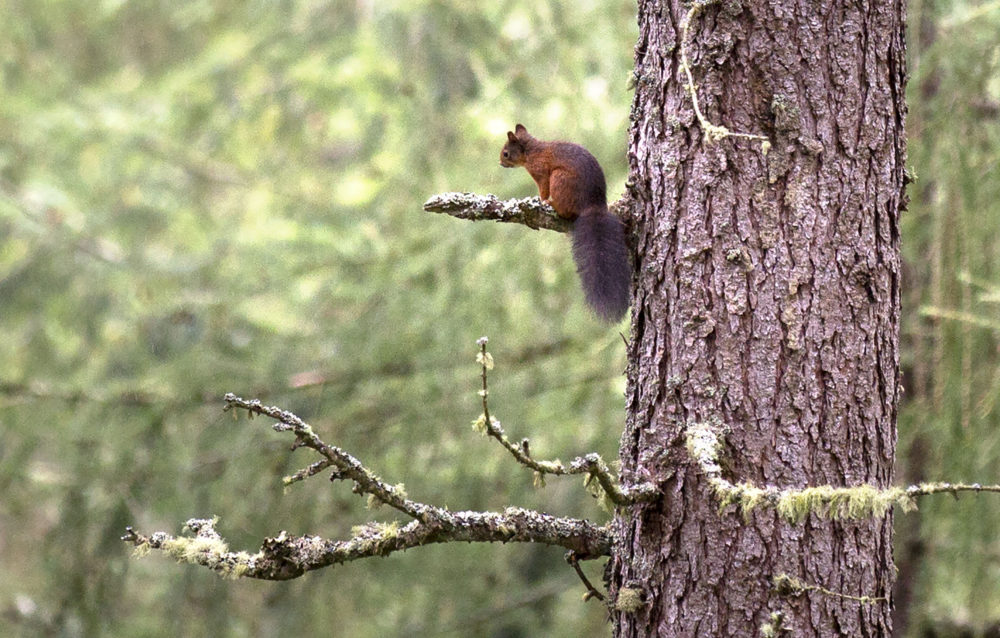The regular return of red squirrels to a local Fife woodland after an absence of many years is being taken as nature’s ‘thumbs up’ for Forestry and Land Scotland’s (FLS) management of the woodland.
The squirrel sighting – reported by a local resident who had thought to never see red squirrels back in the area in his lifetime – came one year after some thinning and clear felling was carried out to improve the structure, biodiversity and the productivity of the site.
Juli Titherington, FLS’s Central Region Environment Advisor, said;
“The Dean plantation is a long established site that features a mix of broadleaved and conifer species and is managed for timber production and biodiversity.
“Appropriate thinning and small-scale felling helps to enhance the richness of the site and you can now see lots of bluebell, bird cherry, and birds – including long tailed tits and black cap.
“Last year, Alder moths were spotted here for the first time – one of the initial recorded sightings in Fife – and to have red squirrels also return is the icing on the cake. It’s a rewarding endorsement of our decisions on site.
“It’s also a very positive demonstration of the benefits of pro-active woodland management.”
In planning the new forest design, the local FLS team worked with contractors to ensure that squirrel dreys and other species’ breeding sites were identified and marked to protect during the felling. They cleared a lot of conifers around some veteran oak trees to ensure that they survive and had to ensure that felling work did not impact on heritage features, such as earthen embankments, marker stones and stone walls that indicate old woodland management.
Many mature trees were retained in the woodland, including conifers to provide a food source for the red squirrels and give them a competitive advantage over the greys. Large veteran trees that were also preserved will provide good denning sites for pine marten, which prey on grey squirrel.
The site has been re-stocked with some Scottish oak trees and other productive species, like Douglas fir, which will maintain the conifer element of the woodland and also supply high quality timber in the future.



